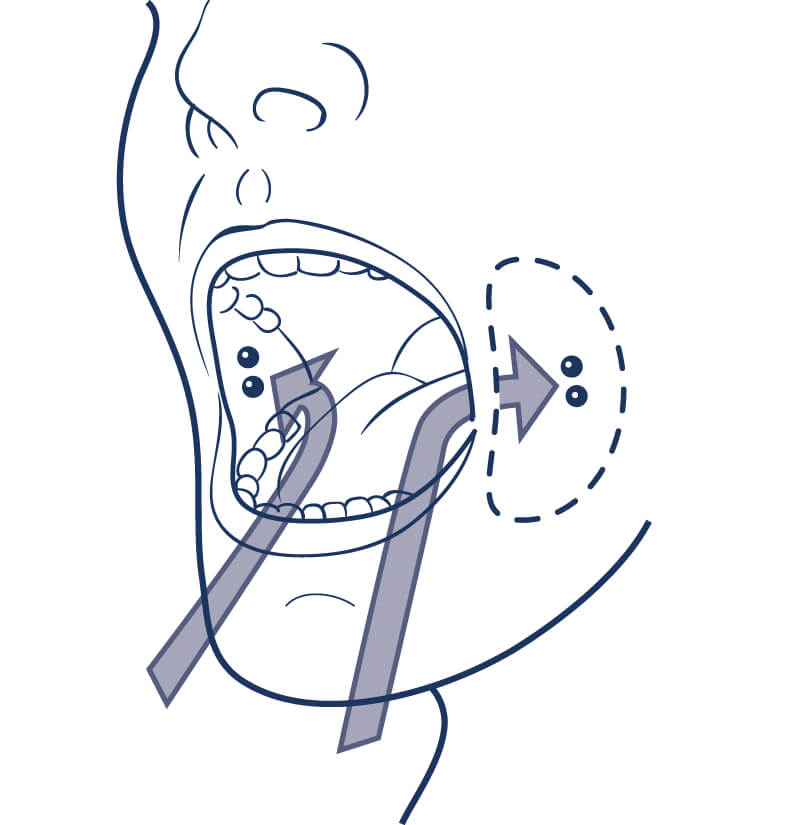Taking Mifepristone
Home > GenBioPro Products > Mifepristone > Patient >
How Does Medical Abortion Work?
Mifepristone is used in combination with misoprostol to end early pregnancy. Early pregnancy means it is within 70 days (10 weeks) since the first day of your last menstrual period. Mifepristone blocks a hormone needed for a pregnancy to continue. Misoprostol causes contractions, which cause the uterus to expel the pregnancy.

How Are Medical Abortion Pills Taken?
Mifepristone and misoprostol are prescribed by a health care professional. Your health care provider may give the tablets to you in person or may order them by prescription from a pharmacy. For mifepristone, the pharmacy must be certified. Depending on how the pharmacy works and what you prefer, you may have the option to have the medications mailed to you or to pick them up at the pharmacy. In accordance with FDA guidelines, before your health care provider prescribes a GenBioPro 200 mg generic mifepristone tablet for you, you will be asked to review and sign a Patient Agreement and review a Medication Guide. The Guide includes detailed instructions on how to take your medications, what to expect, potential risks of treatment, and contact information in case you experience any problems.
Key Steps in Your Medical Abortion
This information is intended as a supplement to the information provided in the Medication Guide.
- Your health care provider will ask you to read and sign a Patient Agreement and give you a Medication Guide, instructions, and contact information.
- Your health care provider will instruct you on how to take the 200 mg mifepristone tablet and discuss how and when to take the four 200 mcg misoprostol tablets.
- You will be prescribed one 200 mg mifepristone tablet and four 200 mcg misoprostol tablets. You may get the tablets from your health care provider in person or a pharmacy may fill your prescription.
- Take the GenBioPro mifepristone 200 mg tablet.

- 24 - 48 hours after taking the GenBioPro mifepristone 200 mg tablet, you will take the misoprostol 200 mcg tablets by placing 2 tablets in each cheek pocket (4 tablets total). See the Medication Guide for detailed instructions.
- Within 2 - 24 hours you can expect cramping and heavy bleeding followed by spotting, which may last several days.
- See "What Symptoms Should You Be Concerned About?" below for symptoms that require immediate medical attention.
- It is very important that you follow up with your health care provider to make sure that your abortion was successful and that you are no longer pregnant.
- Although medical abortion is very effective at ending pregnancy, about 2 to 7 out of 100 will need a follow-up aspiration procedure to end their pregnancy or to stop too much bleeding.

When Could You Start Birth Control?
You can become pregnant again right after your pregnancy ends. If you do not want to get pregnant again, you can start using birth control pills, the patch, or the ring the day after you use misoprostol. In many pharmacies, you can now purchase progestin-only birth control pills without a prescription.
Your health care provider can help you explore options, choose the best contraceptive method for you, and plan the best time to start using it.
What Symptoms Should You Be Concerned About?
Although cramping and bleeding are an expected part of ending a pregnancy, rarely, serious and potentially life-threatening bleeding, infections, or other problems can occur following a miscarriage, surgical abortion, medical abortion, or childbirth. Seeking medical attention as soon as possible is needed in these circumstances. Serious infection has resulted in death in a very small number of cases. There is no information that use of mifepristone and misoprostol caused these deaths. If you have any questions, concerns, or problems, or if you are worried about any side effects or symptoms, you should contact your health care provider.
Be sure to contact your health care provider promptly if you have any of the following:
- Heavy Bleeding. Contact your health care provider right away if you bleed enough to soak through two thick full-size sanitary pads per hour for two consecutive hours or if you are concerned about heavy bleeding.
- Abdominal Pain or “Feeling Sick.” If you have abdominal pain or discomfort, or you are “feeling sick”, including weakness, nausea, vomiting, or diarrhea, with or without fever, more than 24 hours after taking misoprostol, you should contact your health care provider without delay. These symptoms may be a sign of a serious infection or another problem (including an ectopic pregnancy, a pregnancy outside the womb).
- Fever. In the days after treatment, if you have a fever of 100.4°F or higher that lasts for more than 4 hours, you should contact your health care provider right away. Fever may be a symptom of a serious infection or another problem.
If you cannot reach your health care provider, go to the nearest hospital emergency room.
Preparing for Your Medical Abortion
Before you move forward with your medical abortion, we recommend you prepare by taking the following steps:
- Make sure you have plenty of tampons or pads on hand for when you take the misoprostol (see “Day 3” above).
- Ask your health care provider about medicines to address symptoms like cramping and nausea.
- Talk with your health care provider about taking your misoprostol on a day off so you don’t have to deal with cramps and bleeding while at work or school (see “Day 3” above for further details on timing of cramping and bleeding).
- Talk to trusted friends or family so they’re aware of your upcoming medical abortion and can support you through the process.
- If you have children, consider setting up childcare coverage for the day you take the misoprostol. Friends and family can be great resources, even if they’re just spending the weekend with you to help with childcare and housework.

Who Should Not Take Medical Abortion Pills?
Some people should not take mifepristone and misoprostol. Do not take mifepristone and misoprostol if you:
- Have a pregnancy that is more than 70 days (10 weeks).
- Are using an IUD (intrauterine device or system). It must be taken out before you take mifepristone.
- Have been told by your health care provider you have a pregnancy outside the uterus (ectopic pregnancy).
- Have problems with your adrenal glands (chronic adrenal failure).
- Take medicine to thin your blood.
- Have a bleeding problem.
- Have porphyria.
- Take certain steroid medicines.
- Are allergic to mifepristone, misoprostol or medicines that contain misoprostol, such as Cytotec or Arthrotec.
Talk to your health care provider if you are not sure about all your medical conditions before taking this medicine.
